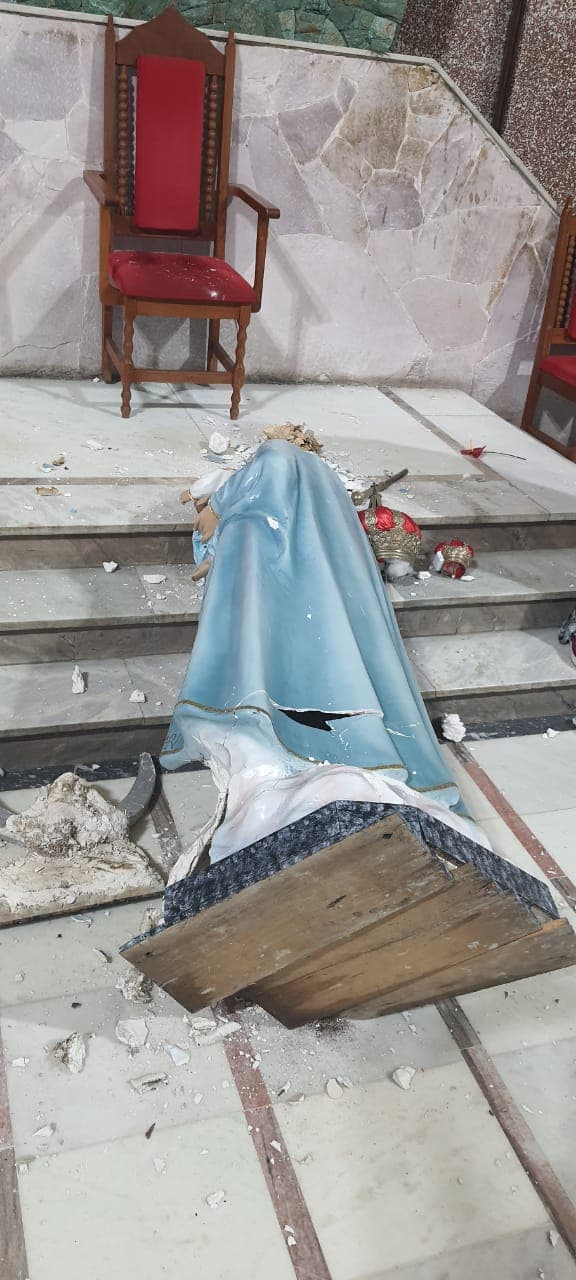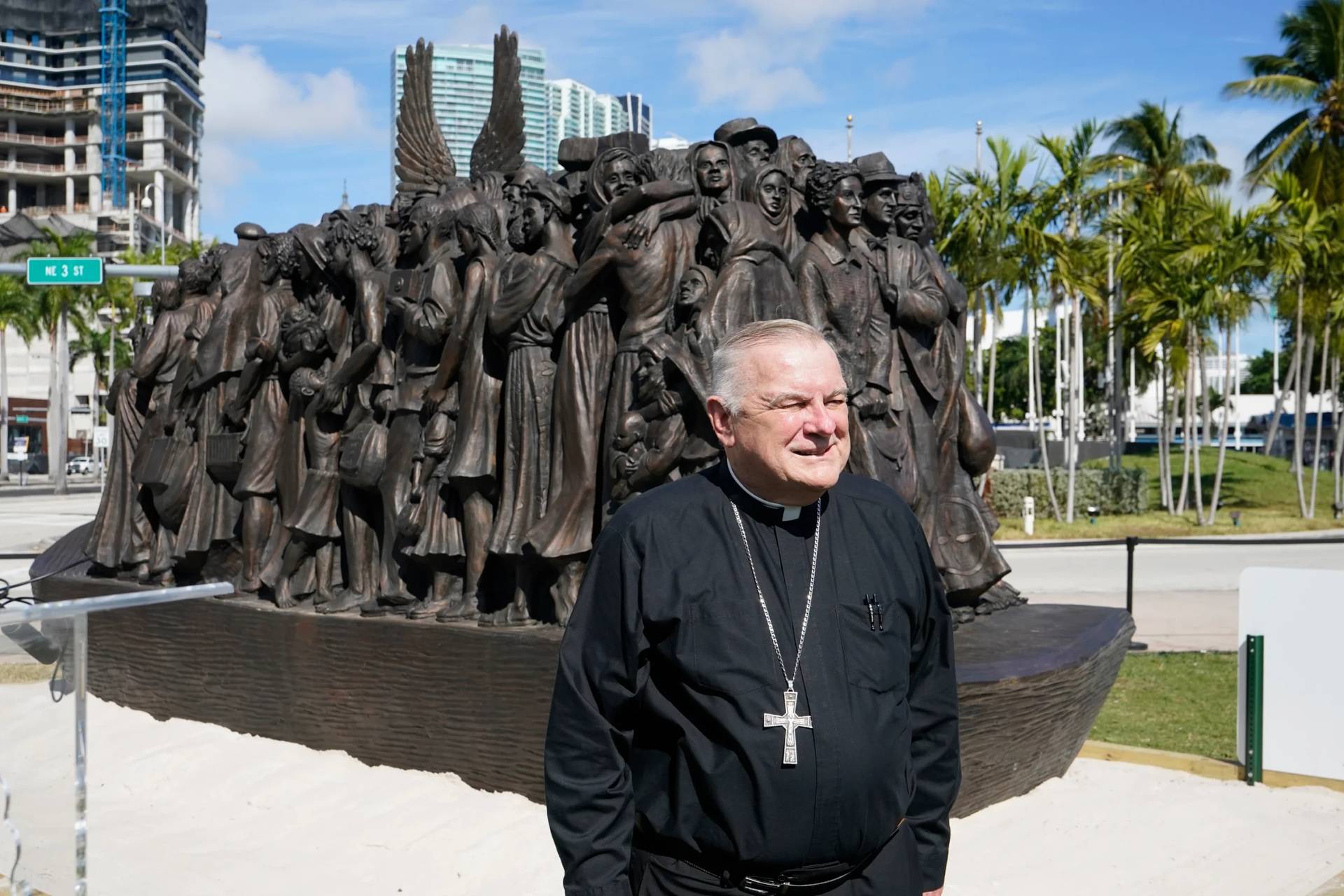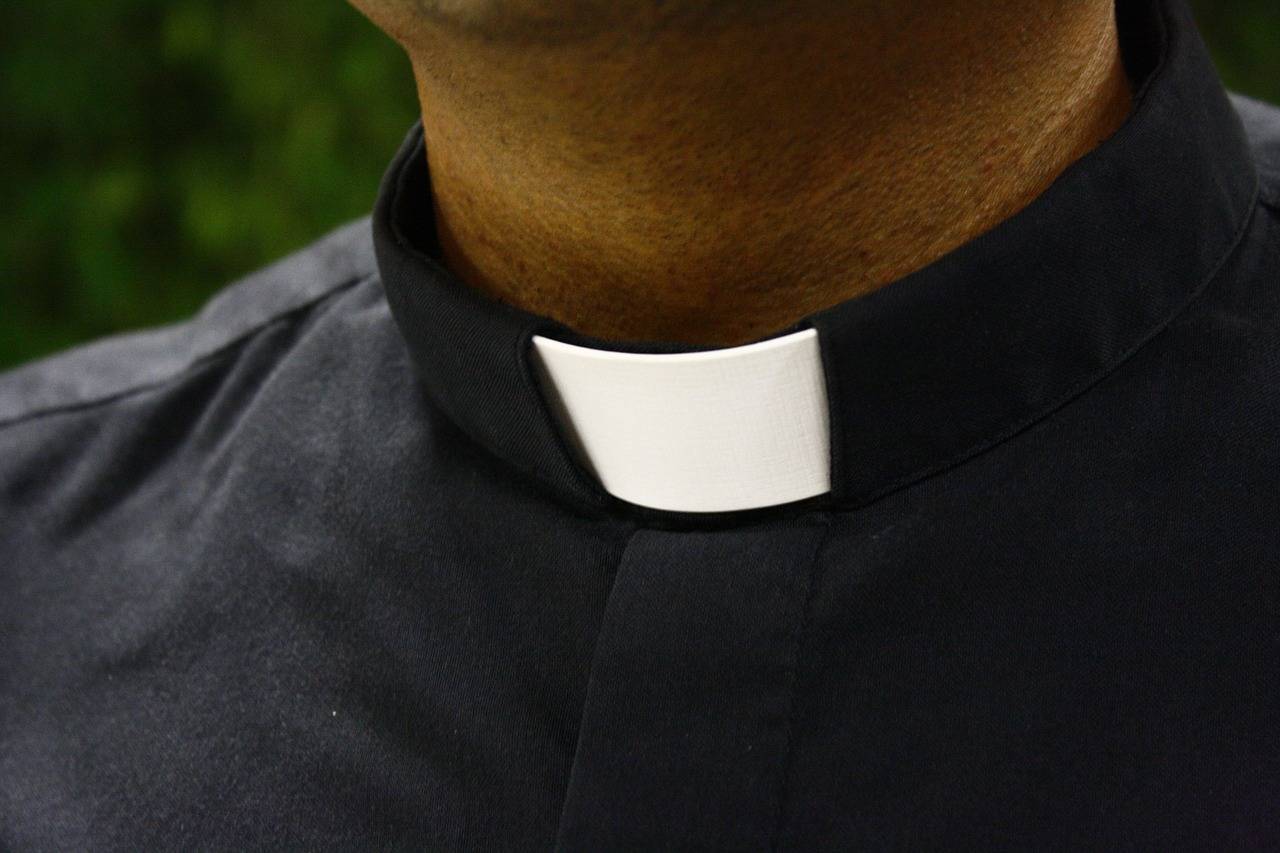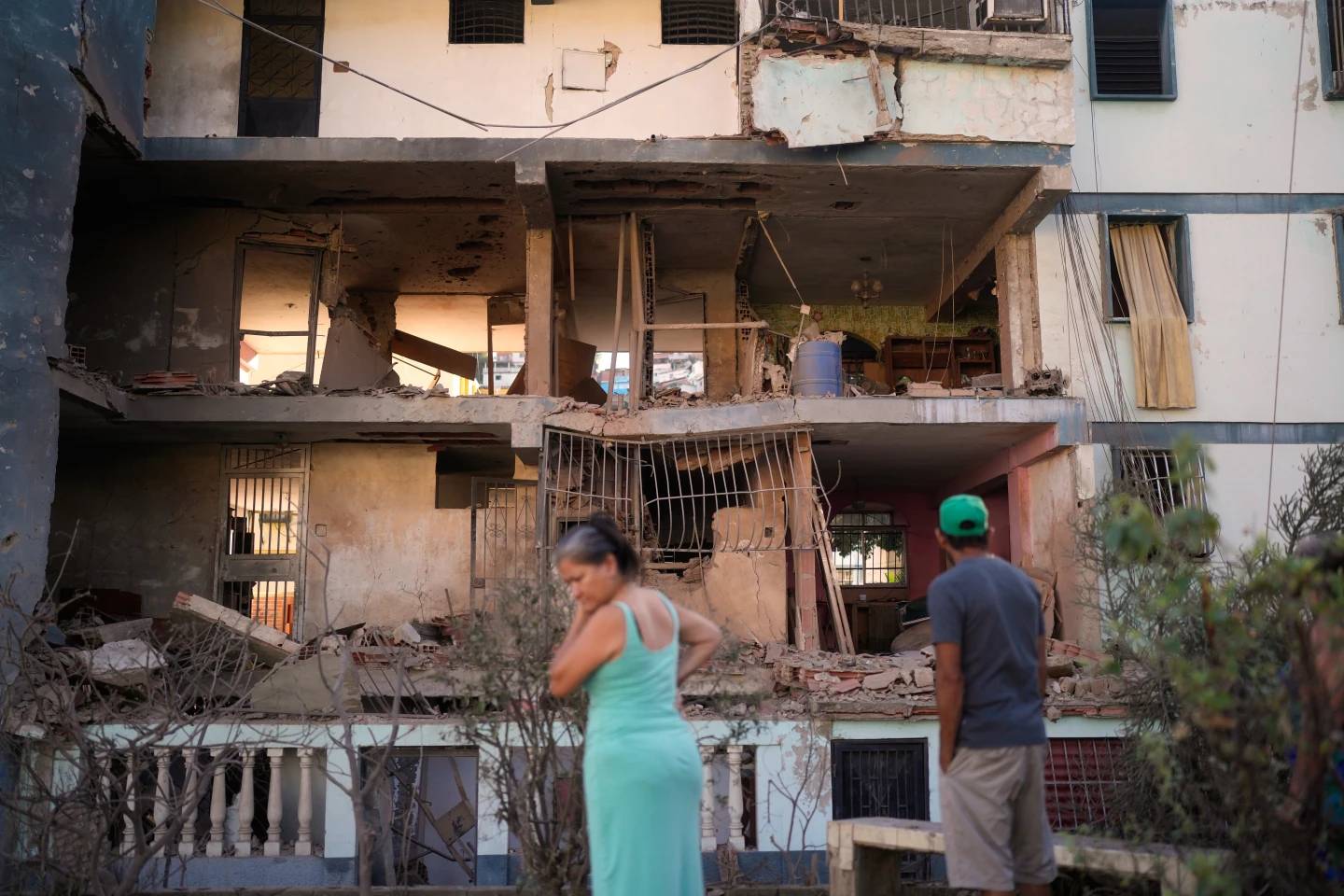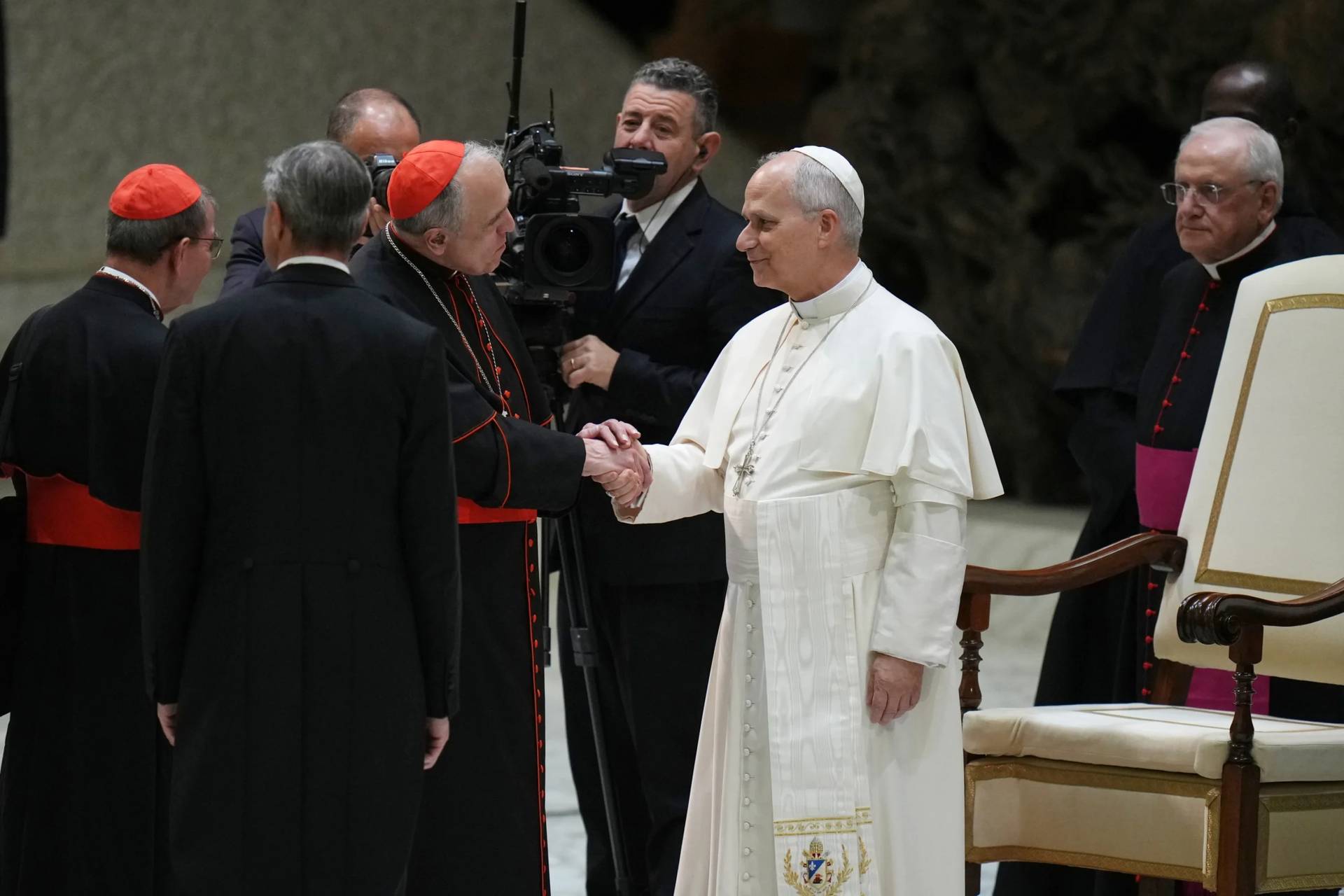SÃO PAULO – At least seven statues of saints were vandalized at a Catholic church in the greater São Paulo metropolitan area, with a group of Evangelical teenagers suspected.
The incident took place at Our Lady of Remedies church in the city of Osasco on the evening of May 3, and one of the perpetrators told a priest in the church they did “in the name of Jesus.”
Father Amauri Baggio said that a group of two young men and two young women broke into the church around 8:30 pm, based on the account of a witness.

“I heard a noise around 9:30 pm and left our house to see what was going on at the church. As I turned on the sacristy’s lights, I saw the group,” Baggio told Crux.
The perpetrators immediately ran out of the church. “I ran after them,” the priest said. He was able to get close to one of the vandals and asked the young man why they did such things.
“He answered that they did it in the name of Jesus,” Baggio said.
Shortly after the priest reached the group of teens, a city bus stopped nearby, and the suspects got on. The priest asked the bus driver to remain stopped and told him that the group vandalized a nearby church, but the man claimed that he had to comply with the bus time schedule and left with the group.
According to Baggio, five big sculptures were damaged. “Two smaller angel statues were also partially destroyed,” he said.
Two of the sculptures have historical significance. The most important statue in the church, the one of Our Lady of Remedies, was probably produced in Mexico at least 70 years ago, said Baggio. “It was given to the church by the Army,” he said. The sculpture was severely damaged.

The other one is a wooden statue of Saint Ubald, brought by the Lateran priests from Gubbio, Italy, probably in the 1940s, Baggio said.
“Given that it’s made of wood, the damage was less serious. Only one of the arms of the sculpture broke off with the fall,” the priest explained.
Baggio said that the group also destroyed planters, threw soil on the church floor, and damaged the restroom toilets.
“They didn’t take anything, not even the coins in the donation box by the door,” he said.
The vandalization of statues of saints and the fact that nothing was taken reinforce the theory that the attack was motivated by Christian fundamentalism.
“The police deputy in charge of the case told me that there have been reports of two other occurrences of that kind in São Paulo State. He thinks it can be some kind of challenge spread through the internet,” Baggio said.
The São Paulo Museum of Sacred Art has volunteered to restore the statue of Our Lady of Remedies. “But I was told that it will be very difficult to fully restore it,” the priest said.
The parish will celebrate a Mass of reparation, after many churchgoers expressed their pain after the desecration of their church.
Baggio said the parish will also review its security measures.

In an unrelated incident two days after the Osasco attack, a man destroyed two statues of saints in the city of Treze de Maio, in Santa Catarina State.
On the night of May 4, he vandalized a statue of a saint in front of the church with graffiti saying, “the Catholic Church was abolished by God.” The next day, he entered the church and damaged statues of saints, pews and the altar.
“The employees of the city medical service called us saying that he attacked a psychologist and that he would probably come to the church in an altered state of mind,” Father Nilo Schilickmann told Crux.
The man was arrested after the acts of vandalism. “The police sedated him. He’ll be taken to a psychiatric institution tomorrow,” the priest said.
The statue of the patron saint of the church, Saint Joseph, was severely damaged. The perpetrator also damaged a sculpture of Our Lady of Fatima and overthrew the altar.
According to Schilickmann, the perpetrator has a long record of mental problems.
“He was a seminarian 20 years ago. But he got sick and left the seminary. We frequently helped him, because he had family conflicts and had nowhere to live,” Schilickmann added.
Over the last few years, the number of attacks against Catholic churches and centers of the African religions Umbanda and Candomblé have grown exponentially in Brazil.
Historically a Catholic country, Brazil has been seeing the proportion of Evangelical Protestants grow more and more over the past few decades. The most recent surveys have shown that only half of the Brazilians currently claim to be Catholic.
